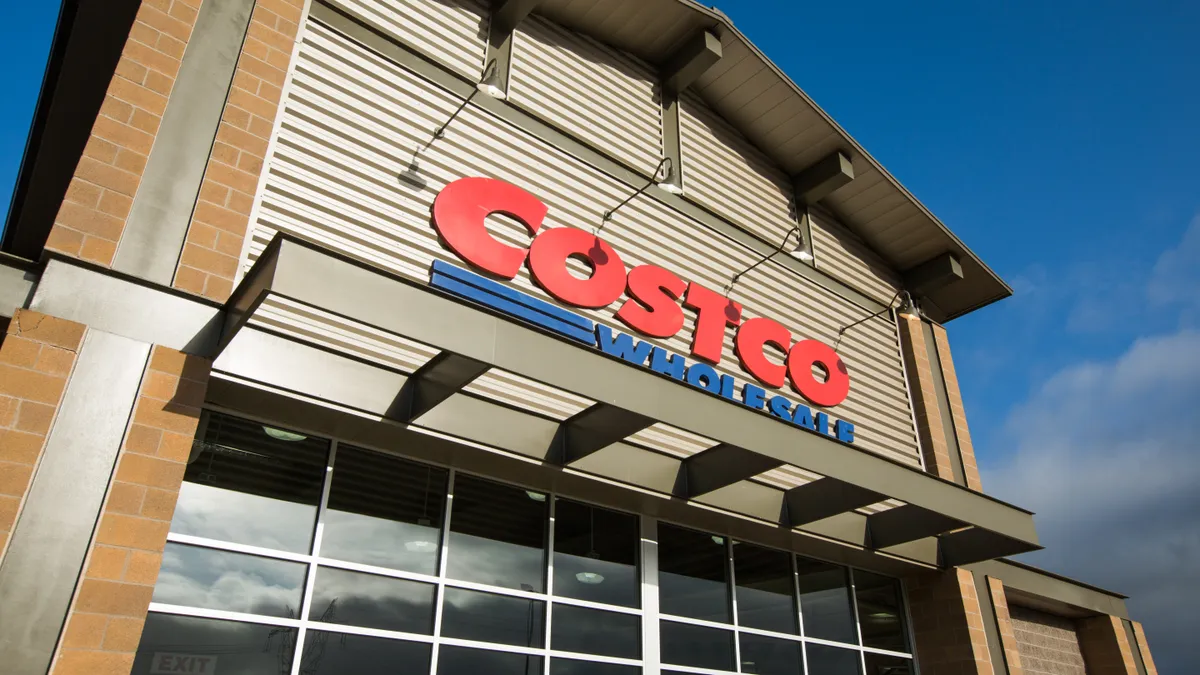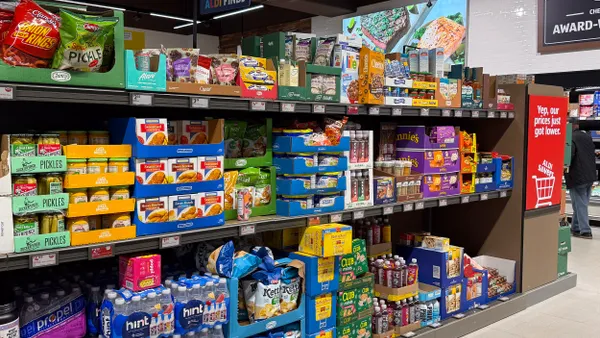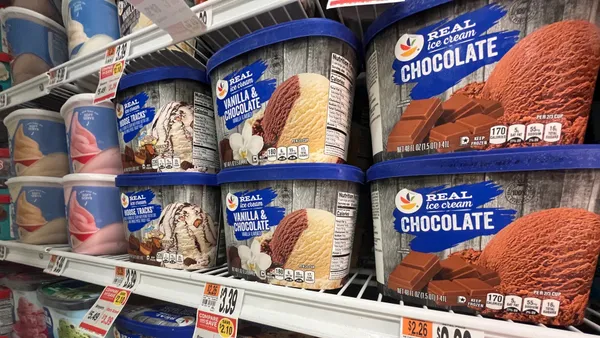Dive Brief:
- Costco recorded increases of more than 10% in both same-store sales and profitability during its fiscal third quarter even as it dealt with continuing pressure from inflation, rising wages, increased freight costs and supply chain disruptions, the club retailer reported last Thursday. Comp sales excluding fuel and foreign-exchange costs rose 10.7% year-over-year, while net income came in at $1.35 billion, up 10.9% compared with the same period in 2021.
- The retailer estimated inflation during Q3, which ended May 8, came in at about 7%, up from approximately 6% in the second quarter and between 4.5% and 5% during the first quarter, Costco Senior Vice President of Finance and Investor Relations Bob Nelson said during the company’s earnings call.
- Like Sam's Club and BJ's, which also reported strong earnings recently, Costco’s emphasis on selling high volumes of a relatively small assortment of goods has played a key role in enabling the company to thrive in the face of challenging market conditions.
Dive Insight:
Costco attributed its solid performance in Q3 to its success in working with suppliers to manage its costs and making good calls about when to pass on increases to shoppers, Nelson said during the earnings call.
The retailer concluded its reputation for offering merchandise at attractive prices put it in position to selectively raise costs for shoppers without putting them off, Nelson said.
“I think we always want to be the best value in the marketplace. And to the extent that we continue to show that, I think it's easier for us to pass on higher pricing, or higher freight costs, or raw material cost, assuming that we show that value in the marketplace,” he said, adding that its volumes put it in a strong negotiating position with suppliers.
“We do a lot of volume in a relatively small number of SKUs [and] were very important to our suppliers in terms of the volume we do in some of these. And so they work with us,” Nelson said.
Costco’s grocery business, including its delivery service, grew in the “low double digits” during Q3 year-over-year, while its overall digital sales rose 7.9% during the period, excluding the effects of fuel inflation and financial exchange rates, Nelson said.
Nelson said Costco generated 9.2% more income from membership fees during the quarter than it did a year ago, suggesting that its business model has been resonating with shoppers as they deal with inflation. He added that the retailer saw a membership-renewal rate of 92.3% for its operations in the United States and Canada, an all-time high, and booked a higher level of renewals among first-year members that it has generally seen in the past.
Despite its success holding onto members, Nelson said Costco has no plans to raise membership costs despite the fact that it has hit the five-year mark since its last increase and has historically boosted fees every five to six years. The retailer currently charges $60 per year for its standard membership and $120 for Executive members, who get additional benefits.
“Given the current macro environment, the historically high inflation and the burden it is having on our members and all consumers in general, we think increasing our membership fee today ahead of our typical timing is not the right time,” said Nelson.
Nelson also noted that “extraordinary high level” of volume it has seen at its gas stations, noting that more people are choosing to fill up without entering the warehouse to shop afterwards. Still, the overall number of people heading inside after purchasing fuel is strong, he said, reflecting the strong ability low-price gas has to attract customers for warehouse club operators.
Costco’s strong results echo robust performances in recent months by rivals BJ’s Wholesale Club and Sam’s Club, both of which have also stood out with consumers during the pandemic.
BJ’s recorded sharply higher earnings and a 4.1% year-over-year gain in same-store sales excluding fuel during its latest quarter. Meanwhile, Walmart-owned Sam’s Club saw same-store sales rise 10.2% during its most recent quarter, although the retailer’s gross profit rate declined.













